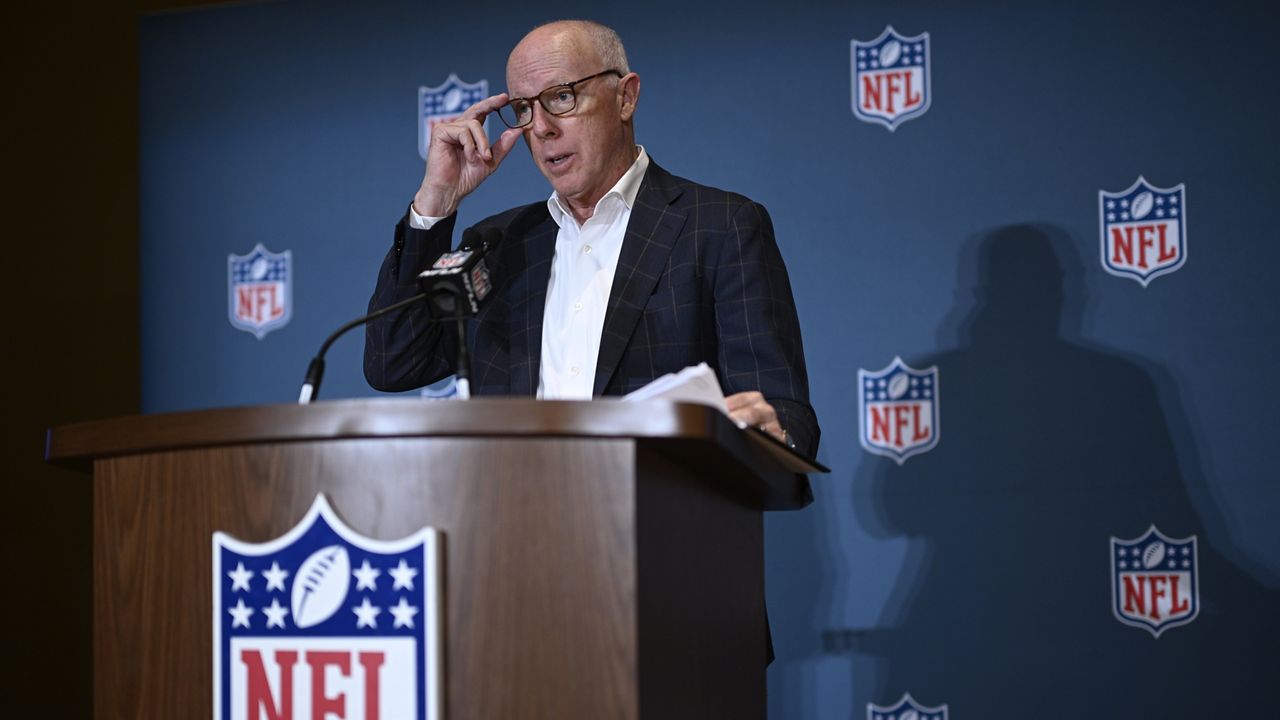Kickoff returns are returning to the NFL.
What You Need To Know
- Team owners have approved a new rule that will take kickoffs, which essentially had become "a dead play," and make them an integral part of the game again
- The major overhaul takes elements of the kickoff rules used in the XFL and tweaks them for use in the NFL beginning in 2024
- For a standard kickoff, the ball would be kicked from the 35-yard line with the 10 kick coverage players lined up at the opposing 40, with five on each side of the field
- The return team would have at least nine blockers lined up in the "set up zone" between the 30- and 35-yard line, with at least seven of those players touching the 35
Team owners on Tuesday approved a new rule that will take what essentially had become "a dead play" and make it an integral part of the game again.
"We feel this is a great day for the NFL," said Saints special teams coordinator Darren Rizzi, who was heavily involved in creating the framework for the new hybrid kickoff.
The major overhaul to special teams — which has been in the works for years — takes elements of the kickoff rules used in the XFL and tweaks them for use in the NFL beginning in 2024. The rule will be in play for one season on a trial basis and then be subject to renewal in 2025.
NFL Competition Committee chairman Rich McKay said the new rule passed by a 29-3 to vote.
"There was a little fear of the unknown," McKay said. "I think the optics are definitely the most drastic (rule change) we've seen. The thing that gives us all the comfort is we have the tape, we've seen it. We can show you the plays and you can see how this can play out."
McKay said there was urgency to vote on this rule before the draft because it could impact the way teams structure rosters. There were 1,970 touchbacks on kickoffs last season that now could be returns. There were 92 fair catches last season that are no longer allowed. Any ball caught in the field of play must be returned.
"The kickoff returners' value is gonna skyrocket," Cowboys special teams coach John Fassel said.
For a standard kickoff, the ball would be kicked from the 35-yard line with the 10 kick coverage players lined up at the opposing 40, with five on each side of the field.
The return team would have at least nine blockers lined up in the "set up zone" between the 30- and 35-yard line, with at least seven of those players touching the 35. There would be up to two returners allowed inside the 20.
Only the kicker and two returners would be allowed to move until the ball hits the ground or was touched by a returner inside the 20.
Any kick that reaches the end zone in the air can be returned, or the receiving team can opt for a touchback and possession at the 30. Any kick that reaches the end zone in the air and goes out of bounds or out of the end zone also would result in a touchback at the 30.
If a ball hits a returner or the ground before the end zone and goes into the end zone, a touchback would be at the 20 or the play could be returned.
"It's a drastic kind of move that's going to be way different," said Ravens coach John Harbaugh, a former special teams coordinator. "Is that the right move at this time? I don't know. I think that's to be determined."
Under current rules, any touchback — or if a returner calls for a fair catch in the field of play — results in the receiving team getting the ball at its 25.
The proposal needed 24 of 32 votes to pass.
"I'm all for it," Chiefs coach Andy Reid said. "You have 2,000 dead plays. Nobody wants to see that. It'll add excitement and newness."
In other rule changes, the owners voted to make two tweaks to instant replay. Replay can now be used to review whether the game clock expired before the snap and also can correct an obvious error when a passer was ruled down by contact or out of bounds before throwing the ball.
Previously, those plays had been ruled dead at the spot but now can be changed with clear evidence. If the pass is caught or intercepted, it would be down at that spot with no advancement. If the pass was incomplete, that would stand.
There were several other changes, including allowing teams in the playoffs to have unlimited returns from injured reserve if they have missed four games. Teams also can place up to two players on IR, the physically unable to perform list or non-football injury list before cutting the roster to 53 players and have them still be eligible to return.
Owners also voted to move the trade deadline back one week to the Tuesday following the end of Week 9 and will allow a team to elevate a "bona fide" quarterback from the practice squad an unlimited amount of times to be the emergency third quarterback.



